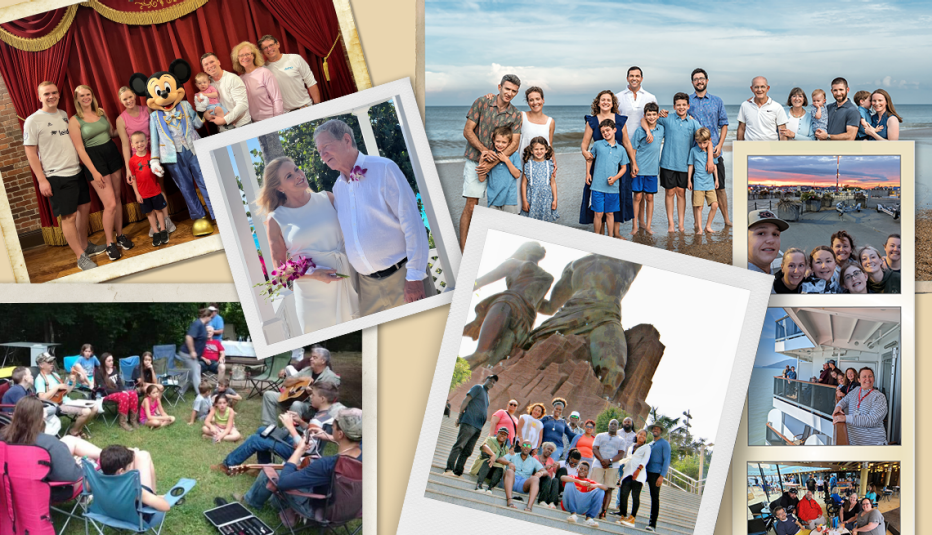AARP Hearing Center
With nearly 500 amusement parks in the United States — ranging from the megaparks operated by Disney and Universal to regional ones like the Six Flags chain and Dollywood to beloved local spots like Kennywood, just outside Pittsburgh — chances are you’re going to visit one. But can you get through a day without losing your smile or sanity? We consulted some seasoned insiders for their theme park survival secrets, as well as ways to make treasured memories. One quick tip: “Let the kiddos take the lead,” says Sandy Groves Smith, 63, of Loudon, Tennessee, who has nine grandchildren. “You may discover a ride or experience that you never guessed you would enjoy.”
Before you reach the park
1. Buy your tickets ahead of time
They often are less expensive when purchased in advance. “Timing is everything,” Shannon Dill, 55, of Atlanta, says. “Travel less during busy times, and costs are less. Ticket prices can vary on the date you choose to visit. And always look for special offers.”
2. Set a budget
Establish a limit for souvenir and gift purchases — let the young ones know ahead of time what they can and can’t get at the park. Think through snacks, too, not just meals. Those random treats add up fast. “I routinely bring our own snacks and water into the park when allowed,” Smith says. In addition, she likes to make her credit cards work for her. “There are quite a few credit cards where you can receive rewards for various theme parks. I put those cards to good use in the months prior to the trip, so I can receive cash back in the form of gift cards to use.”
At the park
3. Plan your parking
Review the park’s website ahead of time. Take a shuttle to the gate so you aren’t fatigued before even entering the park. Note your car’s location, says theme park veteran Janice Kitamura, 73, of San Luis Obispo, California, who has two grown sons. “Our foolproof way: We take a picture of the row sign.”
A great strategy is to get to the park before the gates open; when they do, head directly to the back of the park. Then work your way forward. That should help you enjoy several rides or attractions before the big crowds arrive.
4. Reduce meal costs
To save money at the park, Dill likes to share meals with her husband, teasing that “one entrée at Flame Tree Barbecue in Disney World’s Animal Kingdom will serve ‘a herd.’ ” Another option: Leave the park for a short while for a meal stored in your car. Many parks feature picnic areas near the parking lots, and they will allow you to exit and reenter.
5. Make reservations
Many theme parks have sit-down restaurants that take reservations. That’s one less line to wait in, and they provide rest and relaxation. “We have found that if you try for the earliest dinner reservation, it is easier to get a table,” Kitamura says.



































































